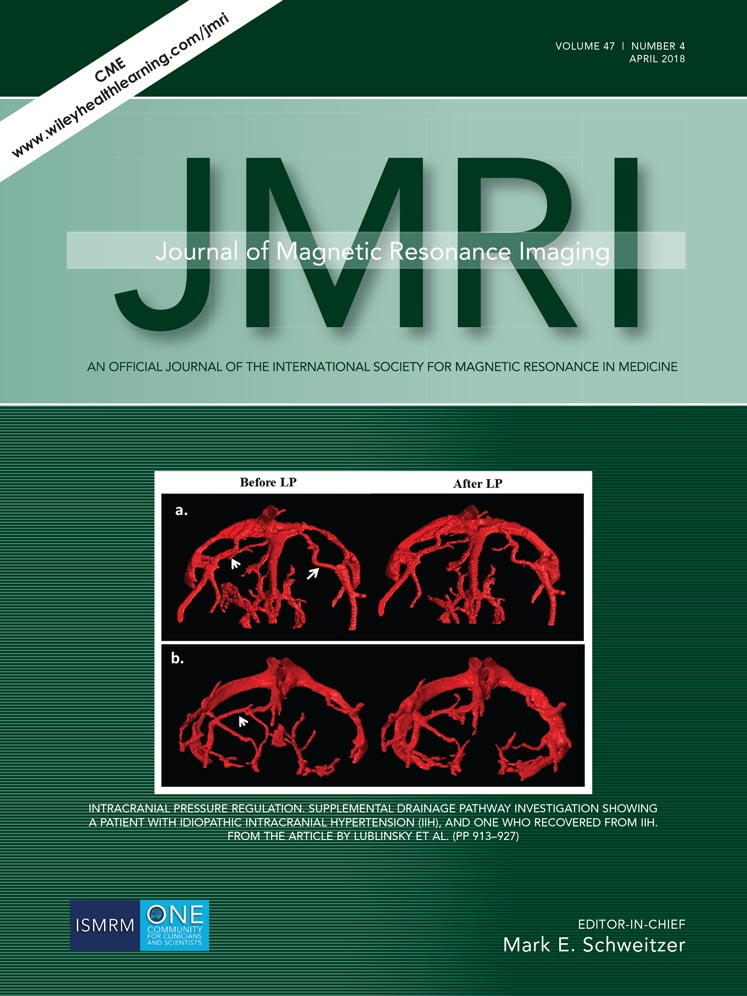Intravoxel incoherent motion diffusion-weighted imaging in assessing bladder cancer invasiveness and cell proliferation
Abstract
Background
Nonmuscle-invasive bladder cancer (NMIBC, Stage T1 or lower) is treated with transurethral resection (TUR), while muscle-invasive bladder cancer (MIBC, Stage T2 or more) requires neoadjuvant chemotherapy before radical cystectomy. Hence, preoperative differentiation is vital.
Purpose
To investigate whether intravoxel incoherent motion (IVIM) diffusion-weighted imaging (DWI) can differentiate NMIBC from MIBC and to assess whether there were correlations between IVIM parameters and the Ki-67 labeling index (LI).
Study Type
Retrospective.
Subjects
Thirty-six patients diagnosed with bladder cancer confirmed by histopathological findings.
Field Strength/Sequence
3.0T magnetic resonance imaging (MRI) DWI with eight b-values ranging from 0 to 1000 s/mm2.
Assessment
Molecular diffusion coefficient (D), perfusion-related diffusion coefficient (D*), perfusion fraction (f), and apparent diffusion coefficient (ADC) were calculated by biexponential and monoexponential models fits, respectively.
Statistical Tests
Comparisons were made between the MIBC and NMIBC group, and differences were analyzed by comparing the areas under the receiver-operating characteristic curves (AUCs). The correlations between these parameters and Ki-67 LI were assessed by Spearman's rank correlation analysis.
Results
The ADC and D value were significantly lower in patients with MIBC compared to those with NMIBC (P < 0.01). No significant (P > 0.05) differences were observed in D* and f. The AUC of D value (0.894) was significantly (P < 0.05) larger than the ADC value (0.786), with sensitivities and specificities of 95% and 87.5% (D) and 80% and 68.7% (ADC), respectively. In addition, the D and ADC values were significantly correlated with Ki-67 LI (r = –0.785, r = –0.643, respectively; both P < 0.01).
Data Conclusion
The D value obtained from IVIM exhibited better performance than conventional DWI for distinguishing NMIBC from MIBC and may serve as a potential imaging biomarker for bladder cancer invasion.
Level of Evidence: 1
Technical Efficacy: Stage 3
J. Magn. Reson. Imaging 2018;47:1054–1060.




